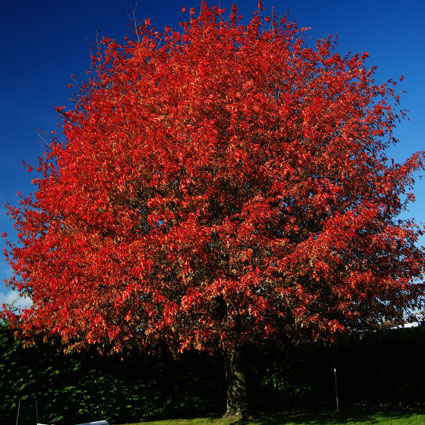
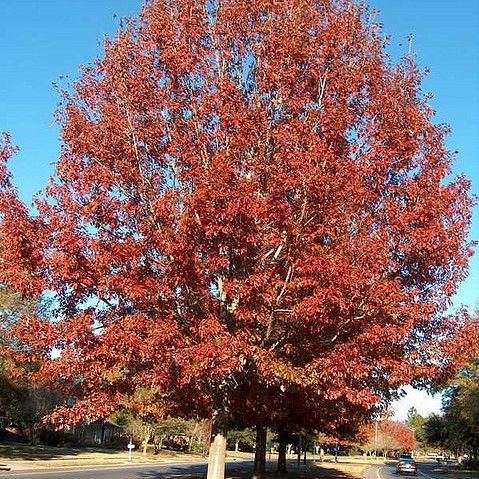
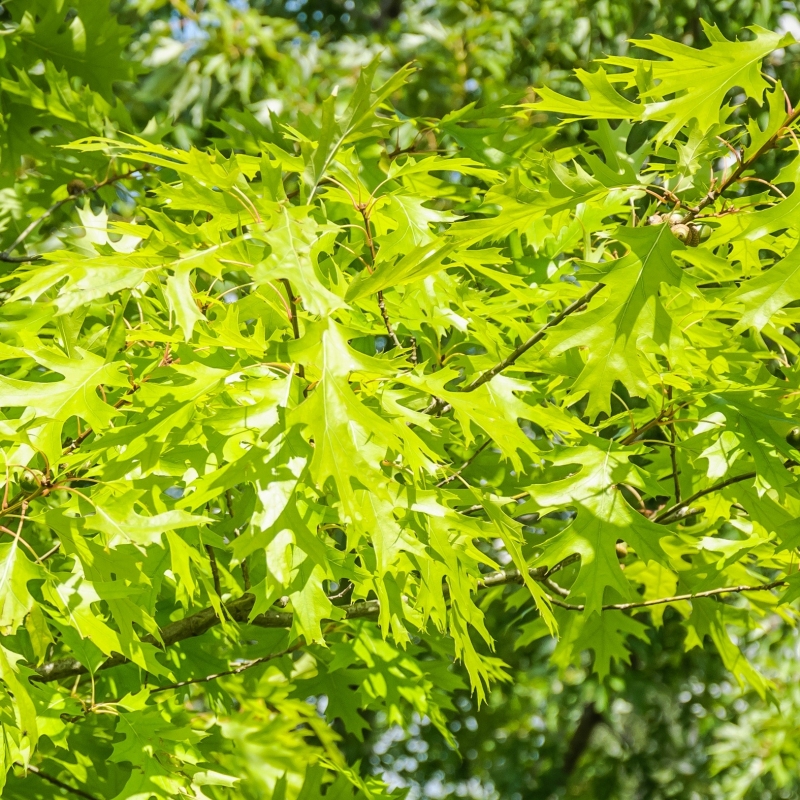
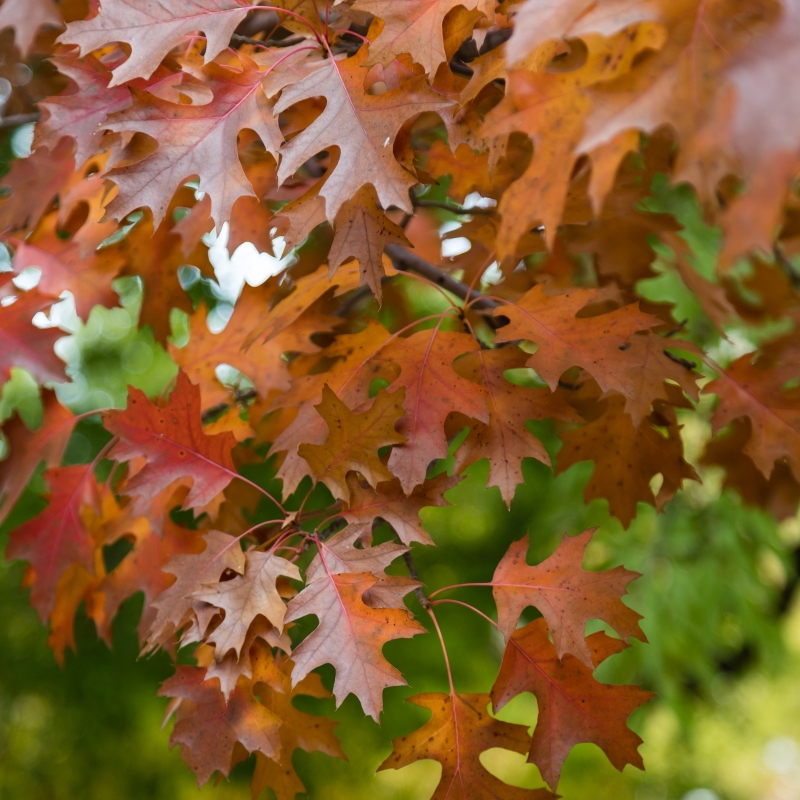
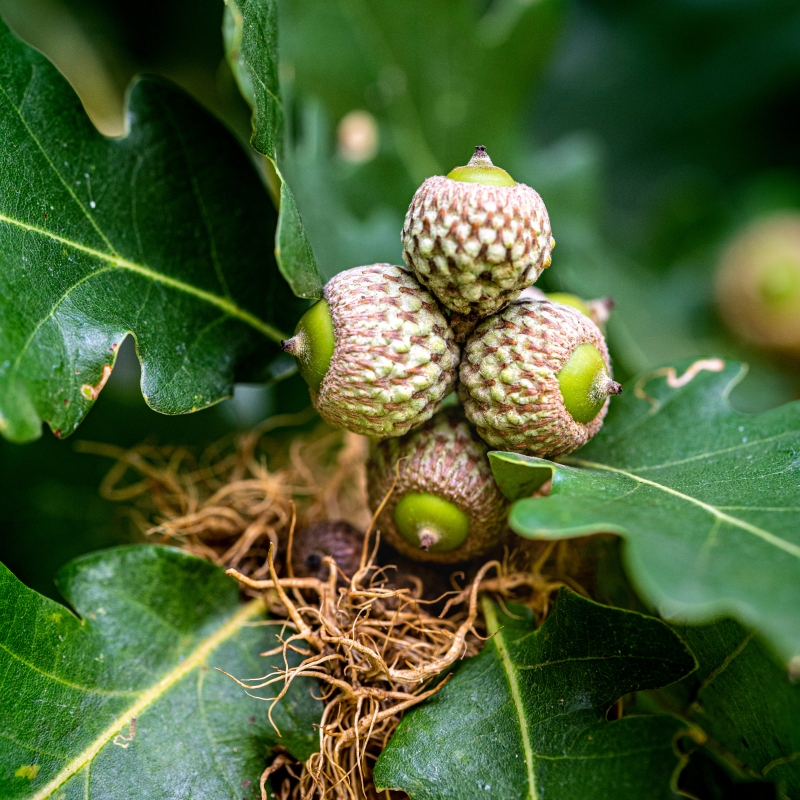
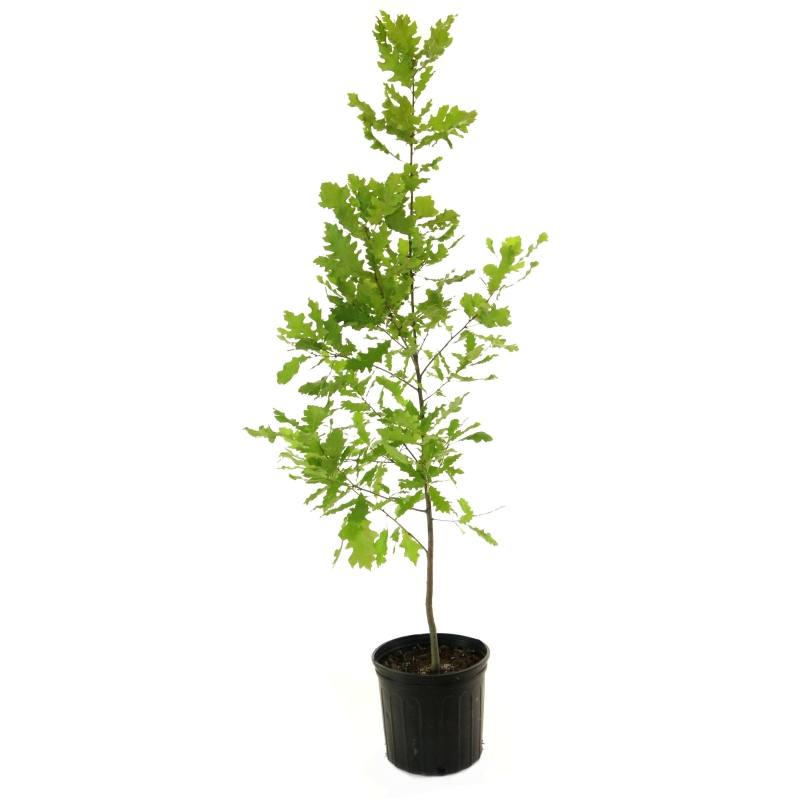
Shumard Oak Tree
Quercus shumardii
83 reviews
Shumard Oak Tree
Quercus shumardii
83 reviews
- 3.5 Gallon
- Trade 3 Gallon
We are sorry, product is currently out of stock due to seasonal availability. Please check the "Related plants available in your area" section below
Not just beautiful - intentionally selected by ShrubHub's 3D landscape design team to fit real-world spaces and maximize yard potential.
Why Shumard Oak Tree?
The Shumard Oak tree (Quercus shumardii) is a popular deciduous tree among landscapers and homeowners due to its vibrant fall foliage and ability to adapt to a range of soil types. Native to the southeastern United States, it can grow up to 100 feet tall and has a rounded crown of leaves. The tree provides ample shade, wildlife habitat, and is tolerant of urban pollution.
Sunlight
Shumard Oak trees require full sun exposure to thrive and develop properly.
Watering
Shumard Oak trees have a moderate watering requirement, needing regular watering in their first few years of establishment. Once mature, they are fairly drought-tolerant but benefit from occasional deep watering during dry periods.
Fertilizing
The fertilizer requirement for Shumard Oak Tree is dependent on the soil conditions and nutrient availability. A balanced fertilizer with a ratio of nitrogen, phosphorus, and potassium (NPK) such as 10-10-10 or 14-14-14 can be applied annually during sprin
Introducing the Shumard Oak Tree: The Ultimate Shade Provider for Your Property
Looking for a tree that provides ample shade and enhances the beauty of your property? Look no further than the Shumard Oak Tree!
Standing tall at up to 80 feet, the Shumard Oak Tree boasts a beautiful crown of foliage that turns a stunning red-orange color in the fall. With a lifespan of up to 500 years, this tree is a long-term investment that will provide benefits for generations to come.
The Shumard Oak Tree is not only a beautiful addition to any landscape, but it also has practical benefits. Its ability to provide shade makes it a great choice for outdoor activities, and it can even help reduce energy costs by shading homes and buildings. Plus, having a Shumard Oak Tree on your property can increase its value and curb appeal.
But the benefits of the Shumard Oak Tree don't end there. This tree also has environmental benefits, such as reducing air pollution and providing a habitat for wildlife. Its large size and long lifespan make it a valuable asset to any ecosystem.
The Shumard Oak Tree has received numerous certifications and awards for its environmental and practical benefits. It is recognized as a Texas Superstar Tree and has been designated as an Oklahoma Proven Tree for its ability to thrive in the harsh weather conditions of the region.
Concerned about maintenance or compatibility with your soil type? Don't worry, the Shumard Oak Tree is easy to care for and can adapt to a variety of soil types. Plus, its deep root system makes it a drought-tolerant tree that can withstand harsh weather conditions.
Investing in the Shumard Oak Tree is a smart choice that will provide years of benefits for you and the environment. Don't miss out on the opportunity to add this beautiful and practical tree to your landscape today!
Take action now and visit our website to purchase the Shu
Plant Information:
| Botanical Name: | Quercus shumardii |
| USDA Zones: | 5 - 9 |
| Water: | Moderate |
| Exposure: | Full Sun |
| Soil Needs: | Well Drained |
| Mature Height: | 40 - 60 feet |
| Mature Spread: | 30 - 40 feet |






Pollination Info
Pollination Information for Shumard Oak Tree (Quercus shumardii)
The Shumard Oak tree is monoecious, which means it has separate male and female flowers on the same tree. The male flowers are small and yellowish-green, and produce large amounts of pollen. The female flowers, which are also yellowish-green but larger than the male flowers, are located on the same tree.
The pollination occurs through wind, meaning the pollen is carried by the wind from the male flowers to the female flowers on the same tree, and sometimes, to the female flowers on other trees. This pollination method is called "anemophily".
The Shumard Oak tree blooms from April to May and sometimes into June, usually after the leaves have emerged. The female flowers develop into acorns once fertilized by the male flowers. The Shumard Oak tree can produce a large number of acorns each year.
Various insects such as bees, wasps and beetles sometimes visit Shumard Oak flowers but they are not significant pollinators.
FAQ
Shumard Oak Tree (Quercus shumardii) FAQ
What is a Shumard Oak Tree?
A Shumard Oak Tree (Quercus shumardii) is a deciduous tree native to North America and is a member of the red oak group. It is known for its attractive, lobed leaves that turn red, orange, or yellow in the fall, and its acorns which are a food source for wildlife.
How tall can a Shumard Oak Tree grow?
A Shumard Oak Tree can grow up to 80 feet tall and 40 feet wide, but usually reaches heights of 50 to 60 feet tall and 25 to 35 feet wide.
What kind of soil and sunlight does a Shumard Oak Tree need?
A Shumard Oak Tree prefers well-drained, acidic soils and full sun exposure, but can tolerate a wide range of soil types and light conditions.
What are some common uses for Shumard Oak Trees?
Shumard Oak Trees are commonly used for shade, ornamental purposes, and as a food source for wildlife. The wood from Shumard Oak Trees is also used for lumber, flooring, and furniture.
How do I care for a Shumard Oak Tree?
It is important to water newly planted Shumard Oak Trees regularly and deeply, especially during drought periods. Prune the tree in late fall or winter to remove any dead or diseased branches. Mulch around the tree to help retain moisture and suppress weeds. Fertilize as needed, but do not over-fertilize as this can harm the tree.
What are some common pests and diseases of Shumard Oak Trees?
Shumard Oak Trees can be susceptible to various pests and diseases such as oak wilt, cankers, leaf spot, and scale insects. Regular inspections and treatments may be necessary to prevent or manage these issues.
When do Shumard Oak Trees typically start producing acorns?
Shumard Oak Trees typically begin producing acorns at around 25 years of age, and can continue to do so for several hundred years.
Do deer and other wildlife eat the leaves and acorns of Shumard Oak Trees?
Yes, deer and other wildlife such as squirrels, raccoons, and turkeys are known to eat the leaves and acorns of Shumard Oak Trees.
Are Shumard Oak Trees drought tolerant?
While Shumard Oak Trees can tolerate some drought conditions, they typically prefer moist soils and regular watering.
Planting & Care
Planting and Care for Shumard Oak Tree (Quercus shumardii)
Planting a Shumard Oak Tree
- Choose a location that receives full sun and has well-drained soil.
- Dig a hole that is twice the diameter and depth of the tree's root ball.
- Remove the tree from its container and loosen any tangled or circling roots.
- Place the tree in the hole and make sure the top of the root ball is level with the ground.
- Back-fill the hole with soil and tamp down gently to remove any air pockets.
- Water the newly planted tree thoroughly.
Caring for a Shumard Oak Tree
- Water deeply once a week, especially during the first year after planting.
- Mulch around the base of the tree to retain moisture and suppress weed growth.
- Prune in late winter or early spring to remove any dead or diseased branches and to shape the tree.
- Fertilize in early spring with a slow-release fertilizer formulated for trees.
- Protect the tree from damage by mowing around the base and avoiding any unnecessary foot or vehicle traffic.
Check Out These Verified Customer Reviews:
Customer Reviews
4.7 out of 5 based on 83 reviews
Thank you! Your review has been submitted.
I am very happy with the Shumard Oak tree I purchased. It arrived in great condition and is thriving in my yard. The website was user-friendly and the shipment was prompt. Overall, a great experience!
Easy ordering process
Healthy and vibrant tree
Item has been added to your cart.


